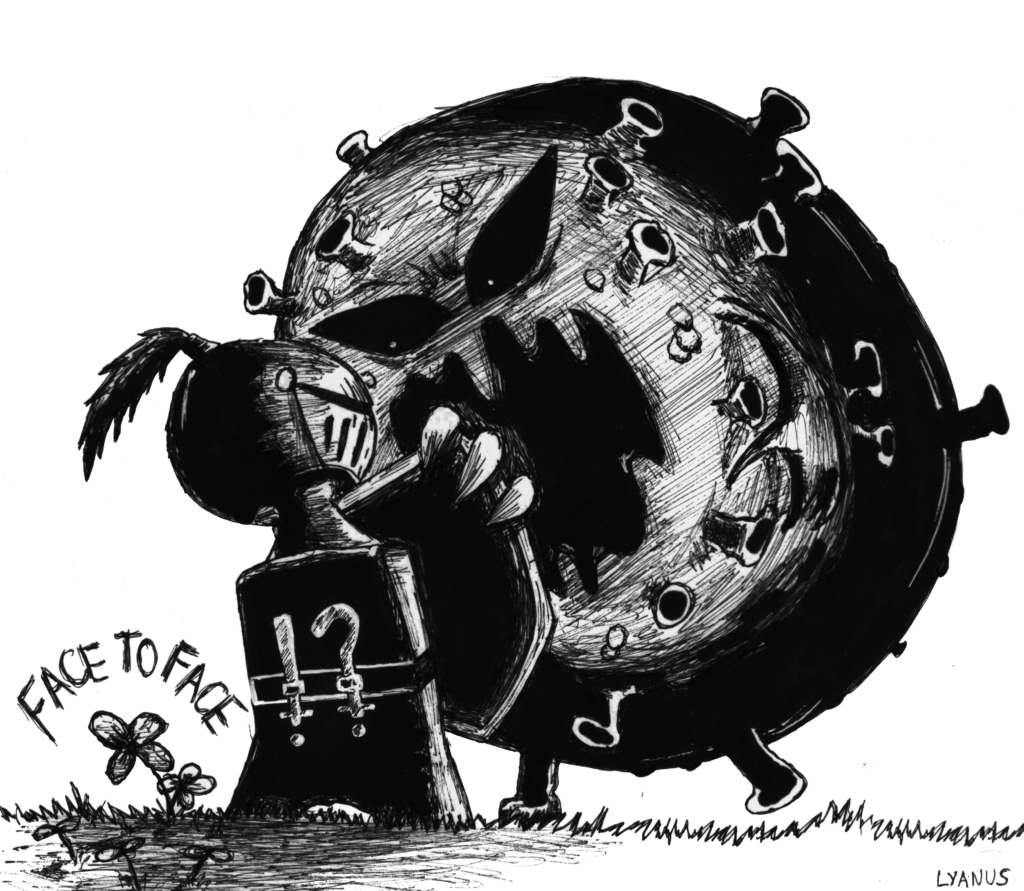theWeeklySillimanian | February 21, 2021

“The first one to respond to is the medical school because medical school and other health sciences, especially in the fourth year, really need face to face, because that’s their world whether with pandemic or not. They have to be placed in a situation wherein it’s almost a real simulation,” Dr. Earl Jude Cleope, University Vice-President for Academic Affairs, told the Weekly Sillimanian (tWS) on the resumption of face-to-face classes for medical and allied health courses. Everyone has waited long enough and now, Silliman University finally takes the necessary steps for the resumption of physical classes following the release of supplemental guidelines set by the Association of Philippine Medical Colleges.
Sillimanians have expressed mixed sentiments on the stated resumption: some are uncertain of how this might run, and others are just glad and hopeful to see things back to normal. This, however, is a huge decision for Silliman University. This would mean that the administration will take accountability for the students’ well-being amid the rising COVID cases in Negros Oriental. Are we really ready for it?
The City of Manila has started welcoming applications from universities and schools offering medical programs to conduct face-to-face classes. Mayor Francisco “Isko Moreno” Domagoso said that so far, only the University of Santo Tomas has applied and was allowed to conduct face-to-face classes for its medical and allied health programs.
The City of Manila approved UST’s proposal after President Rodrigo Duterte allowed the resumption of limited face-to-face classes for medical and allied health programs in institutions located in areas under general community quarantine (GCQ) and modified GCQ areas.
The province of Negros Oriental is currently under MGCQ, and as SU prepares for the approval of the Commission on Higher Education (CHED) regional office for the face-to-face classes, there are raising concerns intertwined with reservations as to how confident the university is.
Although the official University guidelines are yet to be finalized, discussions on quarantine expenses are already being considered. If all the foreseen fees are charged to the students: quarantine facilities, swab tests, food, and other necessities, how about those who are trying to make ends meet with their straitened financials? Is the administration also preparing for financial assistance to students?
During the first semester of online classes, some students have questioned about the laboratory fees they had to pay despite not using any facilities. For Medical Technology students, although they have received medical kits for practice, they think it is not enough from what they are paying.
The Weekly Sillimanian calls for financial transparency, especially in this time of financial crisis. The anticipated limited face-to-face classes for Medical and Allied Health courses entail expenses for parents to take care of. tWS expects that along with health precautions, the University will uphold true transparency in every peso that a student pays for this resumption.
Almost everyone had enough of the virtual setting, we wanted to experience the way pre-pandemic feels like. With the limited face-to-face classes, we are truly one step closer to that hope.
(With reports from Inquirer.net)


